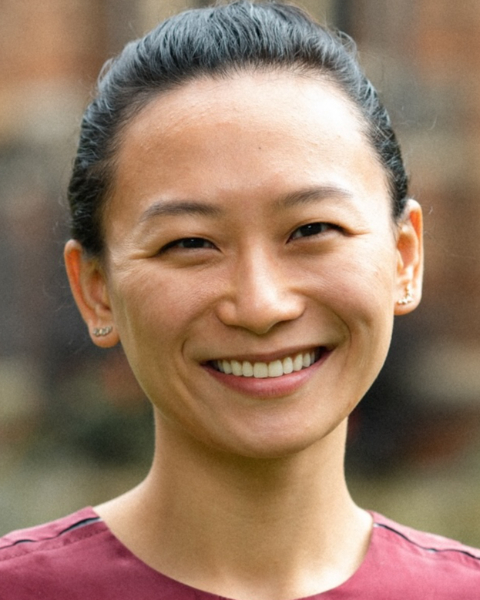PQA 09 - PQA 09 Hematologic Malignancies and Digital Health Innovations Poster Q&A
3451 - Genetic Subclones Identify Phenotypic Variation in Diffuse Large B cell Lymphoma
Tuesday, October 1, 2024
4:00 PM - 5:00 PM ET
Location: Hall C
Screen: 26

Boya Wang, PhD
UNC Chapel Hill School of Medicine
Chapel Hill, NC
Presenter(s)
B. Wang1,2, G. Wright2, Y. Yang2, D. W. Huang2, X. Yu2, J. Phelan2, G. Inghirami2, and L. Staudt2; 1University of North Carolina School of Medicine, Chapel Hill, NC, 2NIH, Bethesda, MD
Purpose/Objective(s): Diffuse large B cell lymphoma (DLBCL) is the most common form of non-Hodgkin’s lymphoma. Patients who receive standard of care treatment have variable responses and up to 40% relapse. Not much is known regarding differences within tumors, or intratumoral heterogeneity. Thus, our question is, what are the genotypes and phenotypes of DLBCL subclones? We hypothesize DLBCL tumors contain genetic subclones with phenotypic variation that reflects axes of B cell development. The aim is to determine the implication of tumor subclones in disease pathogenesis. Materials/
Methods: This study analyzed 101 DLBCL cases with paired single nuclei RNA (snRNA) and single nuclei ATAC (snATAC) sequencing, bulk whole exome and RNA sequencing, flow cytometry, and immunohistochemistry. The majority (75%) of tumors were treatment naive. Seurat 4.2.0 was used to process snRNA data. Genetic subclones were identified by snRNA based copy number. ArchR was 1.0.3 was utilized for snATAC.
Results: The majority (85%) of tumors contained genetic subclones (mean 2, range 1-6). We identified six clusters of gene expression signatures, or themes, that characterized subclone diversity. Three themes (memory, plasma cell, and germinal center) recapitulated B cells blocked in differentiation and accounted for most of the heterogeneity between subclones (F test p=6E-5). Two additional themes (cell cycle, metabolic) represented overall sample activity. Next, we utilized an independent discovery dataset (n=560) to identify genetic alterations associated with each theme. Notably, we observed REL amplification is negatively associated with expression of the memory B cell theme in the discovery dataset (t test, p=1E-11) and validated this in the single cell subclones (t test, p=0.03). REL amplification is a highly recurrent alteration in the germinal center B cell subtype (GCB) DLBCL. In cell line models, we showed REL amplification restricted B cells to the germinal center and prevented memory B cell differentiation, thus driving cells to a malignant GCB phenotype.
Conclusion: This study is a comprehensive characterization of intratumoral heterogeneity. We identified genetic alterations that drive tumor subclones towards specific malignant phenotypes. This work will also provide a single cell resource to the DLBCL community.
Purpose/Objective(s): Diffuse large B cell lymphoma (DLBCL) is the most common form of non-Hodgkin’s lymphoma. Patients who receive standard of care treatment have variable responses and up to 40% relapse. Not much is known regarding differences within tumors, or intratumoral heterogeneity. Thus, our question is, what are the genotypes and phenotypes of DLBCL subclones? We hypothesize DLBCL tumors contain genetic subclones with phenotypic variation that reflects axes of B cell development. The aim is to determine the implication of tumor subclones in disease pathogenesis. Materials/
Methods: This study analyzed 101 DLBCL cases with paired single nuclei RNA (snRNA) and single nuclei ATAC (snATAC) sequencing, bulk whole exome and RNA sequencing, flow cytometry, and immunohistochemistry. The majority (75%) of tumors were treatment naive. Seurat 4.2.0 was used to process snRNA data. Genetic subclones were identified by snRNA based copy number. ArchR was 1.0.3 was utilized for snATAC.
Results: The majority (85%) of tumors contained genetic subclones (mean 2, range 1-6). We identified six clusters of gene expression signatures, or themes, that characterized subclone diversity. Three themes (memory, plasma cell, and germinal center) recapitulated B cells blocked in differentiation and accounted for most of the heterogeneity between subclones (F test p=6E-5). Two additional themes (cell cycle, metabolic) represented overall sample activity. Next, we utilized an independent discovery dataset (n=560) to identify genetic alterations associated with each theme. Notably, we observed REL amplification is negatively associated with expression of the memory B cell theme in the discovery dataset (t test, p=1E-11) and validated this in the single cell subclones (t test, p=0.03). REL amplification is a highly recurrent alteration in the germinal center B cell subtype (GCB) DLBCL. In cell line models, we showed REL amplification restricted B cells to the germinal center and prevented memory B cell differentiation, thus driving cells to a malignant GCB phenotype.
Conclusion: This study is a comprehensive characterization of intratumoral heterogeneity. We identified genetic alterations that drive tumor subclones towards specific malignant phenotypes. This work will also provide a single cell resource to the DLBCL community.
